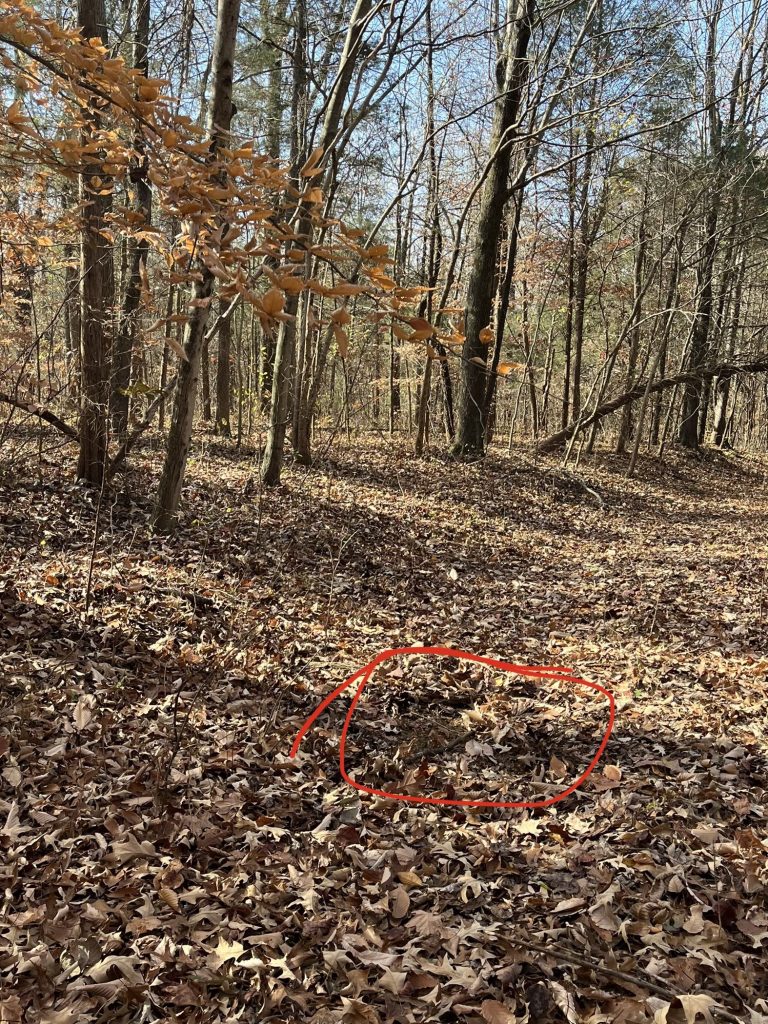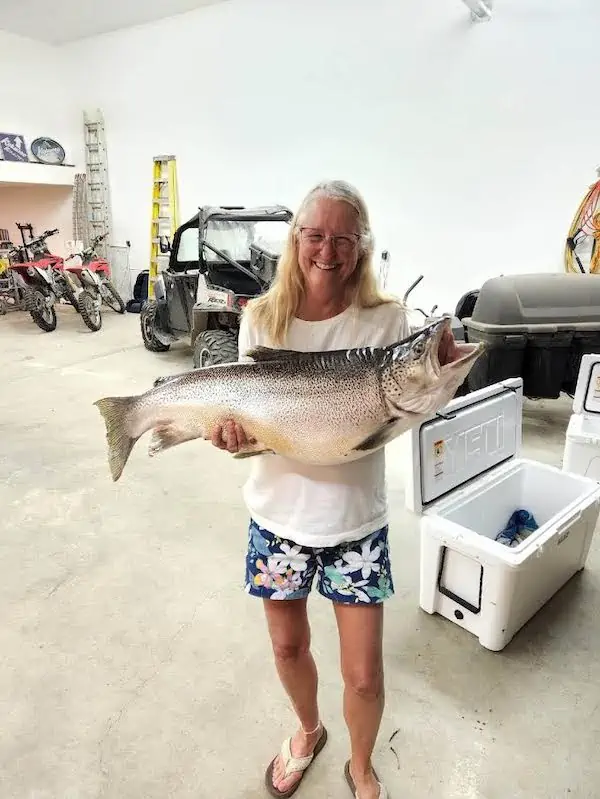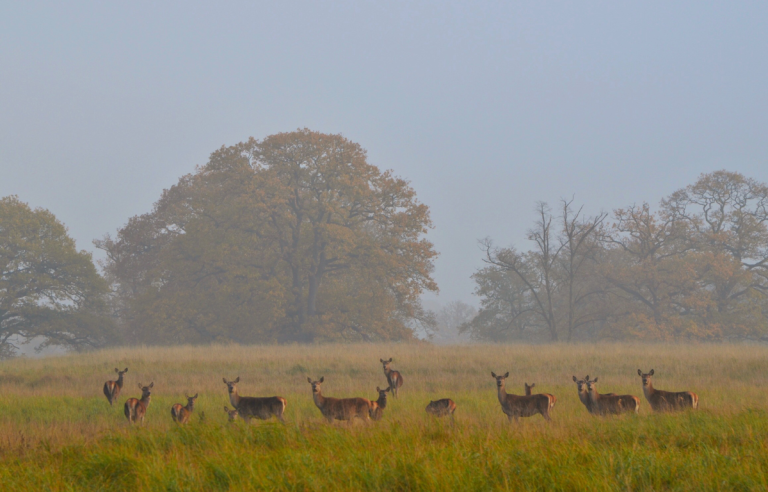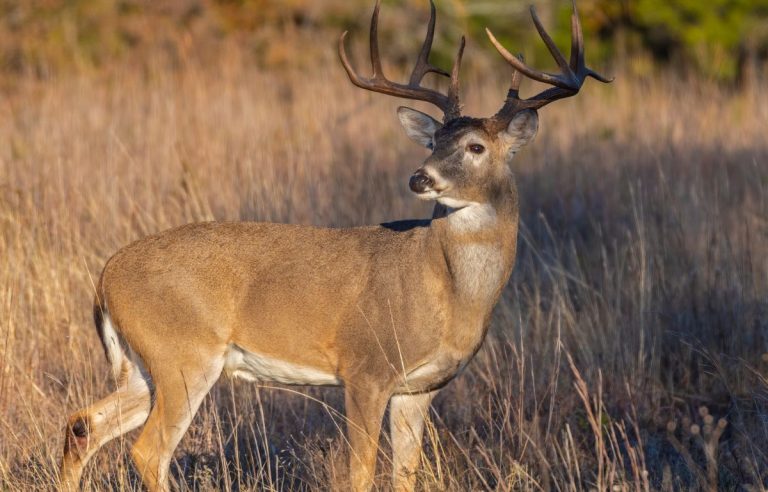Guide to deer scrapes
Deer hunting requires skill, patience, and knowledge to be successful. In order to hunt deer, you have to know the behavior of deer. We have a deer hunting guide to help with that.
After hunting often, you start to identify patterns that deer make. One technique that can help hunters increase their chances of success of finding deer is identifying and utilizing deer scrapes.
In this post, we’ll discuss what deer scrapes are, how to identify them, and tips for utilizing them in your hunting strategy.
Table of Contents
What are Deer Scrapes?
Deer scrapes are patches of bare dirt on the ground created when a buck uses his hooves to scrape away leaves and other debris from the forest floor, exposing the earth beneath. Once the scrape is created, the buck will urinate on it, leaving behind scent that other deer can detect.
Deer scrapes are important because they serve as a way for deer to communicate with each other, particularly during the breeding season.
Bucks will create scrapes to attract does. They are also marking their territory by urinating on the leaves and dirt to make sure other bucks in the area know they are around.
How to Identify Deer Scrapes
If you’re trying to figure out how to find a deer scrape, then it’s actually pretty simple.
The easiest way to find and identify a deer scrape is to look for bare patches of dirt in the woods. Most times, it means something has been there scraping the ground, hopefully a big buck. However, not all bare patches are created equal.
Bottom line: walk your property, look all around and most likely you’ll find some scrapes.
Let’s look at a few things you can look at to help identify big buck scrapes.
How big are deer scrapes?
Deer scrapes are usually around 2 – 3 feet in diameter but they can range in size from a few inches to several feet. You will notice the leaves are removed and it’s a large circle area of bare dirt.
I have found big scrapes and small scrapes. They all vary in size but usually around 2 feet.
Where do you find deer scrapes?
Bucks are usually found under a low hanging branch. This is called a licking branch and the buck marks it with his scent. This communicates to other bucks that he’s around and owns this territory.
Look for areas where the ground has been disturbed and there is a small depression or pit.

The picture above was a deer scrape in the woods behind my house. You can see the bare earth where a deer scraped around with his hooves. Also, look up and you can see the licking branch right above it.
Can you tell how fresh a buck scrape is?
You should be able to identify if a scrape is fresh or not.
In the woods, things move around a lot, the weather can change things and the ground cover can take over pretty quickly. Fresh scrapes will have loose dirt and a strong urine scent. Get down there and smell it! Deer pee is potent!
Older scrapes won’t have loose dirt and it might be covered with leaves or sticks.

You can see in my picture above, this deer scrape was pretty good size, but was starting to get covered with leaves. It was later in the season.
You may also notice broken branches or twigs around the scrape, as bucks will often use their antlers to clear the area around the pit.
How to hunt buck scrapes
Now that you know how to identify deer scrapes, we need to use them to our advantage. Let’s take a look at some of the ways we can hunt those buck scrapes.
Hunt the scrapes
If you found a scrape, you know the deer are in the area. Set up your stand or ground blind near the scrape about 20 yards out and keep an eye on the area. If there’s a fresh scrape around, then the deer are there too. Some bucks will return back to the same scrape year after year and even 365 days a year, not only during the rut.
Use scents
If the deer aren’t coming back to the scrape, then try putting some deer urine around it. This will surely catch a bucks attention and draw him back to the scrape. My favorite is the Buck Nut line of scents.
Be patient
Hunting over scrapes can be effective, but it requires patience. Bucks may not visit the scrape every day, so be prepared to wait for the right opportunity and keep hunting all day if you have to. Nobody said getting the big bucks was easy.
Why is buck scraping important for deer management?
Buck scrapes serves several purposes in deer population management. It helps to control the number of deer in a particular local area. By creating a scrape, bucks are marking their territory and indicating that they are ready to mate.
Scrapes are also an essential tool for monitoring the health of deer populations. They can tell wildlife officials how many bucks are in the area. This information can be used to determine the health of the entire deer population in the region, allowing for early detection and treatment of any diseases such as chronic wasting disease.
Conclusion
Identifying and hunting deer scrapes can be a valuable tool for hunters. By understanding what deer scrapes are, how to identify them, and how to utilize them in your hunting strategy, you can increase your chances of a successful hunt.
Do you have any other tips for hunting or identifying deer scrapes?









One Comment